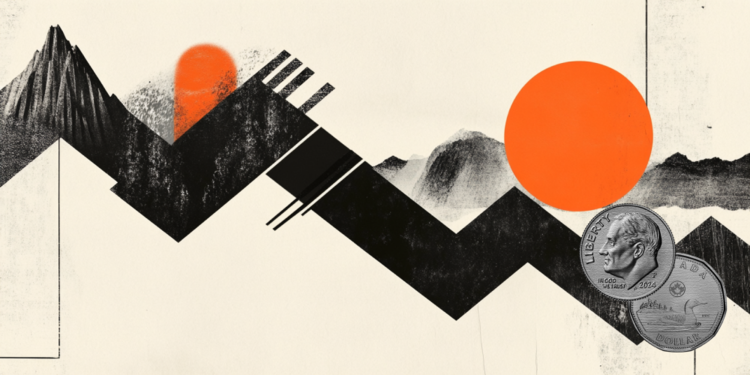In the Colosseum of Rome and other amphitheaters scattered throughout the vast Roman empire, gladiator shows were not merely disputes between humans. Gladiators also faced animals.
Although there are representations of these disputes on old mosaics and texts, concrete forensic evidence had been scarce so far: scientists have determined that bite marks in the pelvis of a man buried in what is believed to be a gladiator cemetery near the English city of York, known at the time as Eboraucum, are probably a lion, probably a lion.
The man, whose estimated age was 26 to 35 years old at the time of death, seems to have lived in the 3rd century, when Eboraucum was an important city and military base in the northern Roman province of Britania. The bite marks provide clues about their supposed death in the arena.
“Here we can see perforations and cutouts, indicative of a great dentition drilling soft tissues and bone,” said forensic anthropologist Tim Thompson of Maynooth University in Ireland, the main author of the study published on Wednesday in the journal PLOS One.
“We do not think this was the fatal wound, because it would be possible to survive this injury, and it is in an unusual location for such a large feline. We believe it indicates the drag of an incapacitated individual,” said Thompson.
The discovery illustrates how gladiator shows, often presented by emperors and other celebrities, who included wild animals, did not limit themselves to the main cities of the Empire, but extended to the most distant provinces.
This man’s skeleton represents the first known direct physical evidence of combat between humans and animals since the days of ancient Rome, the researchers said.
Wildlife used in such shows included elephants, hippos, rhinos, crocodiles, giraffes, ostriches, bulls, bears, lions, tigers and leopards, among others. In 2022, archaeologists announced the discovery of bones of bears and large felines in the Colosseum.
“Predator animals – especially big cats, but also sometimes other animals, such as bears – were used as combatants against expert gladiators, known as Venators,” said study co -author John Pearce, Roman archaeologist of King’s College London.
Large and aggressive animals were also placed against each other – a bull and a bear, for example – and often chained, Pearce said. Simulated hunts were also performed in arenas, with humans against animals and animals against other animals, said Pearce.
Sometimes animals were used as captives and criminals execution agents – a well -known Latin practice such as Damnatio ad Bestias – in which the victim was tied or helpless, Pearce said.
Violent death
Pearce described what may have happened during the final moments of man in York. The gladiator may have dressed a combined costume of protection and theater. The animal may have been subjected to food deprivation to stimulate ferocity.
“Very speculatively, from the gladiator’s perspective, perhaps an approach such as a killer would have been applied – dodge and injuring progressively to prolong performance,” Pearce said.
“In this case, clearly, this ended in failure, being likely, given the position of the mark of the bite, that the lion was attacking or dragging the individual on the floor. In the end, when one or both were dead, there would be a burial for the gladiator and the use of the animal carcass as food for viewers,” Pearce said.
Gladiators were usually slaves, prisoners of war, criminals and volunteers.
“For successful gladiators, a popular reputation, as expressed in fan graffiti in Pompeii, probably money and the possibility of being released if they became a successful arena star were the incentive and reward,” Pearce said.
York gladiator remains are evidence of spinal abnormalities, perhaps caused by back overload, as well as dental diseases. He had been beheaded, probably as a blow to mercy after injury and defeat in the arena. It was buried next to two other men whose bodies were covered with horse bones.
There are traces of some buildings and walls of the city of Eboraucum, although no amphitheater has been identified yet.
Eighty -two human skeletons, most of the well -constituted young men, were excavated in the cemetery. Many had healed and unhealthy injuries, consistent with gladiator fighting, and were beheaded, perhaps because they were defeated in arena struggles.
“This is a reminder of the culture of the spectacle, essential to Roman public life,” said Pearce.
“This new analysis gives us very concrete and specific evidence of a violent encounter between humans and animals, either as a combat or punishment, showing that the large felines captured in North Africa have been displayed and fought not only in Rome or Italy, but also surprisingly, even if we do not know how often,” said Pearce.
(Report by Will Dunham in Washington)
This content was originally published in bite brands reveal Gladiator meeting with Lion in former Britania on the CNN Brazil website.
Source: CNN Brasil
Charles Grill is a tech-savvy writer with over 3 years of experience in the field. He writes on a variety of technology-related topics and has a strong focus on the latest advancements in the industry. He is connected with several online news websites and is currently contributing to a technology-focused platform.







